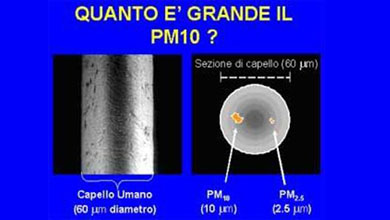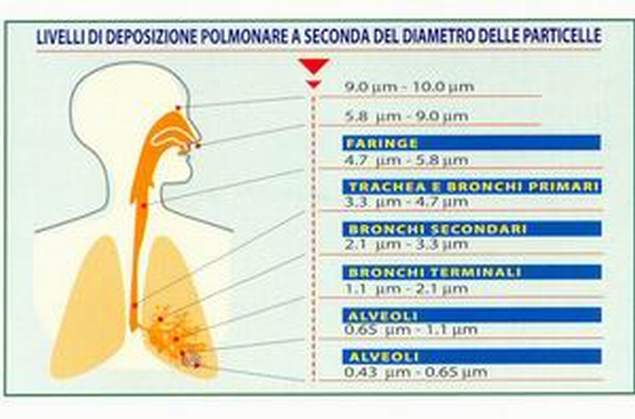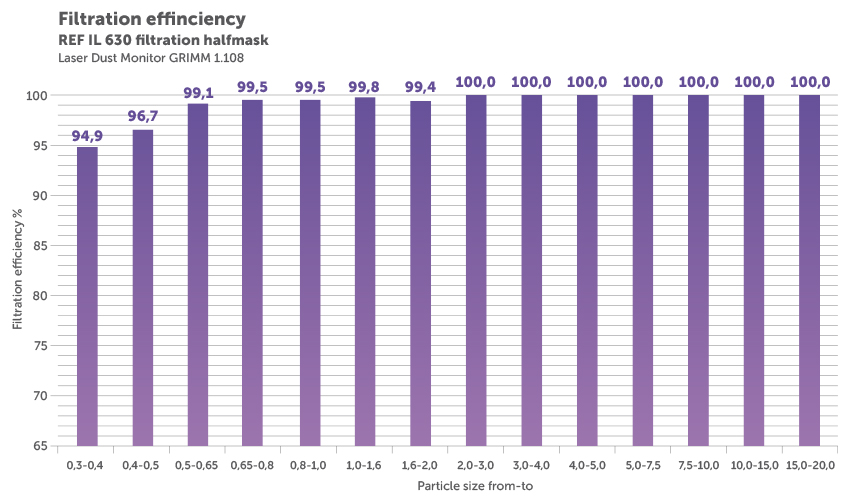The atmosphere is a mixture of gas and water vapor. Some of these gases are polluting: what exactly does it mean? The European Environment Agency explains well:
“Pollutants are substances that are directly or indirectly in the air and in the environment, they can have a harmful effect on human health or the environment as a whole. Many of these substances may already be present in nature at low concentrations originating from natural processes, others may be of anthropic origin only.”
The main pollutants in the air are:
Sulfur dioxide (SO2)
Nitrogen dioxide (NO2)
Carbon monoxide (CO)
Ozone (O3)
Benzene (C6H6)
Thin powders (PM10 – PM2,5)
Thin powders (PM10 – PM2,5)
Thin powders are formed from toxic and carcinogenic substances. They reach the deepest and most delicate parts of our lungs, where they accumulate. Car traffic is the main cause of this form of pollution.
The notorious nickname PM 10 is for Particulate Matter, namely: Particulate matter (small particles).
10 means particles have a diameter less than 10 microns (10 millimeters in diameter).
These are microscopic particles not visible to the naked eye. They are tiny fragments of organic substances (animal and vegetable fibers, pollens, bacteria, spores) and inorganic (heavy metals, asbestos fibers, sulphates, nitrates, coal and tar powders, etc.). The particles are widespread in the air, which is why we talk about airborne or aerodispersed particles.

PM 2.5 is the finest fraction of PM10, consisting of particles with a diameter of 2.5 microns or less.
PM 2.5 is the most dangerous particle for health and the environment: in fact, this particulate is deposited on the alveoli and can also remain suspended in the atmosphere for days.
A study carried out by the Regional Environmental Protection Agency of Lombardy shows that the main source of PM 10 production is vehicular traffic. The municipality of Milan contributes to about 24% of provincial emissions, of which traffic accounts for 83% and heating for 16%. For vehicles the most polluting fuel is diesel; for heating systems is the fuel gas, followed by diesel. Minor fuels are methane and LPG.GLI
Human health effects
PM 2.5, the finest fraction of the PM10, is particularly insidious because it enters our lungs at every breath and is so small that it can easily reach the lung alveoli. Here foreign elements are swallowed by cells of our defense system, called ‘macrophages’, which try to destroy the intruder by digesting it; if they do not succeed, they keep it hidden inside. This situation involves two types of risks:
1° Continuous entry of foreign elements into the alveoli may damage the cell layer responsible for gaseous exchanges (oxygen entering and carbon dioxide outbreaks) and cause breathing problems.
2° If substances that macrophages fail to digest accumulate in the body, being toxic or carcinogenic, can cause serious illness in time.
The hazard of PM 10, and in particular PM 2.5, has been demonstrated by numerous epidemiological studies.
PM 2.5 is in fact a complex mixture of thousands of chemical compounds and some of them are of extreme interest due to their toxicity. Attention is focused on polycyclic aromatic hydrocarbons (PHAs) that play a role in the development of cancer. Some names: Fluoranthene, Pyrene, Chrysene, Benz [a] antracene, Benzo [b] fluoranthene, Benzo [k] fluoranthene, Benzo [a] pyrene, Dibenz [a, h] antracene. The harmful effects are proportional to the concentration and (as stated by the World Health Organization) it is not possible to detect a value below which PM 10 – PM 2.5 does not cause any harm to health. There are acute effects occurring on days when the concentration of pollutants is higher: acute respiratory infections, asthma crisis, circulatory and ischemic disorders, aggravation of respiratory and cardiac symptoms in predetermined subjects. Other chronic effects are due to the long-term presence of pollutants in the air: persistent cough and perspiration, chronic bronchitis, decreased lung capacity.
Plus the PM is small, the more the road runs…

Harmful gases and dust are a real danger to health. The latest epidemiological study, “Misa-2”, published as a supplement to the magazine “Epidemiologia Prevenzione”, collects the work of a hundred of epidemiologists from universities and public and technical health agencies of the Harp. Relating day-to-day between 1996 and 2002, mortality and hospitalization of the 15 most populous Italian cities with data from the control units results in worrying results: “Every increase in the concentration of pollutants in the air is immeasurable in the next ten days more dead and shelter. ” The total of deaths in a year are about 2,000. The cities under consideration represent less than a fifth of the Italian population: the death toll on the entire national territory could rise to “about 10,000.”
The limits set out by the regulation
The EU, with Directive 1999/30 / EC of 22 April 1999 concerning concentrations of PM10 (transposed by DM 02/04/2002 No 60), established the daily limit value for PM10, which should not exceed 50 μg / m3, limit not to exceed 35 times a year.
The same directive also sets the annual limit value of 40 μg / m3.
After 1 January 2005, the daily limit value of 50 mg / mc can not be exceeded more than 7 times per year and the annual limit value is 20 μg / m3 (Indicative limit values to be revised with subsequent decree on the basis of future Community legislation).
Measurements in real times
Filtration facts
Filtering facials are a form of respiratory protection to be taken by those who are in contact with pollution from city traffic.
At the moment, the use of a filtering facial is the only remedy possible for ordinary citizens, cyclists and motorcyclists, and so on. they can adopt to defend themselves from thin powders, given the poor effects obtained with traffic limitation measures.
Use only masks labeled EN 149: Masks that are often seen by passers-by, cyclists and unfortunately also by law enforcement officers, are NOT perfectly suited to fine dust filtration. These are so-called “hygiene masks” for coarse powders, which do not conform to EN149 and offer no protection except for coarse powders, as said. By law, it is not permitted to use them as an individual protection device, but to protect the outside environment from possible contaminations originating from the wearer.
Unlabeled masks EN149 can only be used to prevent possible contamination of the manipulated product, thus protecting the outside environment from the user and NOT the wearer of the mask (example: food industries).
The European Standard EN 149 divides the filter façades according to the minimum filtering efficiency they have to guarantee and classifies them in 3 categories:
FFP1: Minimum guaranteed filtering efficiency 78%
FFP2: Minimum Filtering Efficiency Guaranteed 92%
FFP3: Guaranteed minimum filtering efficiency 98%




